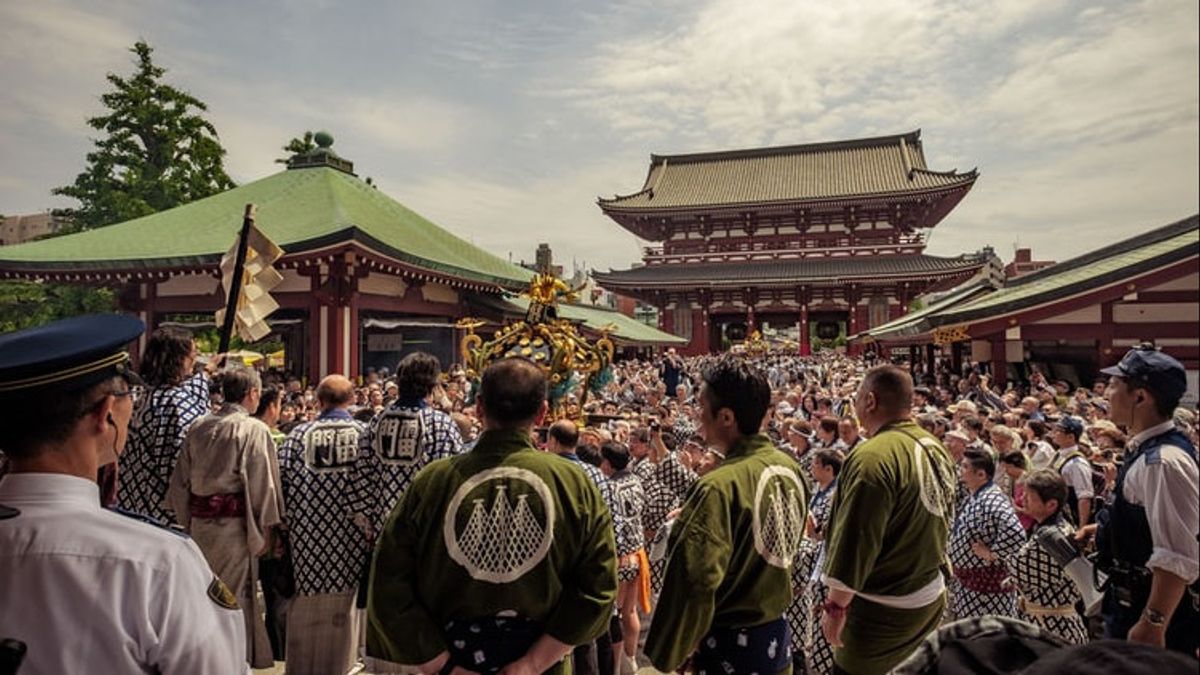JAKARTA - Japan is famous for its amazing customs and culture. This culture is believed to be the reason why Japan is very advanced in terms of technology and human resources.
Because of its popularity, the culture of Japanese society has been adapted by many other countries. Japanese culture is spread massively through various media. Some are through anime shows, songs, films, food, and so on.
Before knowing the uniqueness and customs of Japanese people, let's first get to know its historical roots. Ancient Japanese culture has also been influenced by Chinese or Chinese culture. The most obvious adaptations are Buddhist teachings and kanji writing.
However, when it entered the Edo Period, Japan became a closed country. Japan began to limit relations with other countries and foreign influence. This independence then causes the cherry country to have quite identical habits in the memory of the world community.
Interestingly, if we observe, some of the customs of the Japanese people have similarities with the culture in Indonesia. Japanese society is very concerned about manners. In Indonesia, it is called manners or in Javanese terms, unggah-ungguh.
Here are some of the unique and special Japanese cultures.
1. Sado
Japanese people have a habit of drinking tea. If you like watching Japanese movies or anime, you will often encounter tea-drinking scenes in a shop or at home. The habit of drinking this tea is called Sado.
Drinking tea has been a tradition passed down from generation to generation in Japan, even as a ceremony. Japanese people carry out this ceremony with full appreciation. Drinking tea is done in a special traditional room with Tatami floors.
History of Sado
The tea-drinking tradition has a long history. Sado has been practiced since the 9th century. In the ancient text, Nihon Koki, it is said that there was a Buddhist monk named Eichu who returned from China.
The monk met the emperor and served tea. This series of processions is then called Sado.
The meaning of Sado
Drinking tea is not an ordinary casual habit. Sado has a very deep philosophy for the Japanese.
They believe in a tea-drinking procession there is a philosophy of Wabi-Sabi, namely aesthetics that contains spiritual values. Usually, there is an instructor in a sado ceremony. He will accompany and direct the correct sado steps.
2. Sumo
Japan has a very popular martial arts sport, namely Sumo. Even though it is classified as traditional wrestling, some people still practice it today.
Usually, sumo is done by two wrestlers who have a stocky body. But actually, this sport does not set weight rules. In fact, wrestlers gain weight so they don't get knocked down easily.
Sumo match rules are quite interesting. The wrestlers will knock each other down or push each other out of the circle of the battle arena. If one of the wrestlers leaves the ring, then he loses.
Sumo History
Sumo first appeared in the ancient Japanese era. Then modern sumo underwent development during the Edo Period. Historically, Japanese people practiced this sport to entertain the gods in Shinto teachings.
The meaning of Sumo
Sumo is not just a sport, it contains spiritual values. The ritual is performed in the form of purifying a ring using salt, drinking holy water, and hanging a miniature Shinto shrine.
Before starting a match, the wrestlers will usually clap their hands. They make this move to summon gods. While the sumo referee dressed up like a Shinto priest.
3. Matsuri
Japanese people love to organize festivals. In Japanese, 'festival' is called 'matsuri'. Various kinds of festivals are held in Japan, every year, starting from the fall, new year, religious, summer, and so on.
Matsuri is done not only for fun or partying, but they contain spiritual elements. Japanese society holds a festival to honor and express gratitude for the blessings given by the gods.
Each matsuri is always accompanied by a mikoshi. A mikoshi is a miniature shrine. Festival participants will parade around the miniature. They believed that the mikoshi were the vehicles that the gods rode on.
People wearing Hanten or Happi costumes are carried on the shoulders of Mikoshi. Bearers lift mikoshi over their shoulders while walking around the festival grounds.
In the matsuri celebration, there is also a dance called Bon Odori. This ancestral dance is held during the Bon period (July and August). The roots of this dance come from Buddhist beliefs.
Apart from being a form of gratitude, matsuri is also believed to be able to absorb bad things or things, purify oneself and the environment from harm, and ask for a bountiful harvest.
4. Shodo
Shodo is a writing art from Japan. This art is referred to as Japanese calligraphy. Shodo is a combination of the art of writing with a spiritual concept or inner silence.
History of Shodo
This writing art comes from Chinese culture. Shodo became known during the Han dynasty. In the 6th century, this art was only introduced to Japanese society for the purpose of state communication.
The meaning of Shodo
Shodo has a lot of value to Japanese society. Apart from being an art, shodo is used to communicate and seek to experience zen values. By writing Shodo, they learn to understand harmony and wisdom in life.
Shodo is made from a combination of poetry, literature, and painting. The shodo maker must do the feeling and exercise. When painting, they will regulate emotions, rhythm, aesthetics, and spirituality.
5. Taiko
Taiko is a typical Japanese musical art in the form of drumming. This musical art is usually performed during festivals in Japan and religious ceremonies.
The taiko tabuah is full of vigor. During the show, the taiko players will let out cheers with words of encouragement. They cheered loudly to the accompaniment of the song
History of Taiko
This musical art has a long history. Initially, taiko did not originate from Japan but was brought from Korea and China in the Kofun period or the 6th century.
The meaning of Taiko
This musical art originated among farmers in ancient Japan. They performed Taiko to give thanks to the gods and to reject reinforcements.
6. Hanami
One of the favorite tourist destinations in Japan is the autumn and spring scenery. In spring, visitors can see the beauty of the cherry blossoms and cherry blossoms in bloom.
Seasonal markers are important to Japanese society. Japanese people have a special custom called hanami. Hanami is a tradition of seeing flowers that bloom in spring.
The meaning of Hanami
When the cherry blossoms bloom, then the first spring has come. Along with that, it is also believed that life has just started again. The flower has blooming time for two weeks, then after that, it will fall.
Japanese society captures the moment of spring for self-reflection. Japanese society witnesses the flowers that fall and bloom like a cycle of life.
Those were some of Japan's unique cultures. Every culture reflects how Japanese people define life. Japanese society has embraced and carried out this culture to this day. These cultures and customs indirectly play a role in shaping Japan, which is known to be very advanced, in various ways; technology, art, and science.
The English, Chinese, Japanese, Arabic, and French versions are automatically generated by the AI. So there may still be inaccuracies in translating, please always see Indonesian as our main language. (system supported by DigitalSiber.id)








